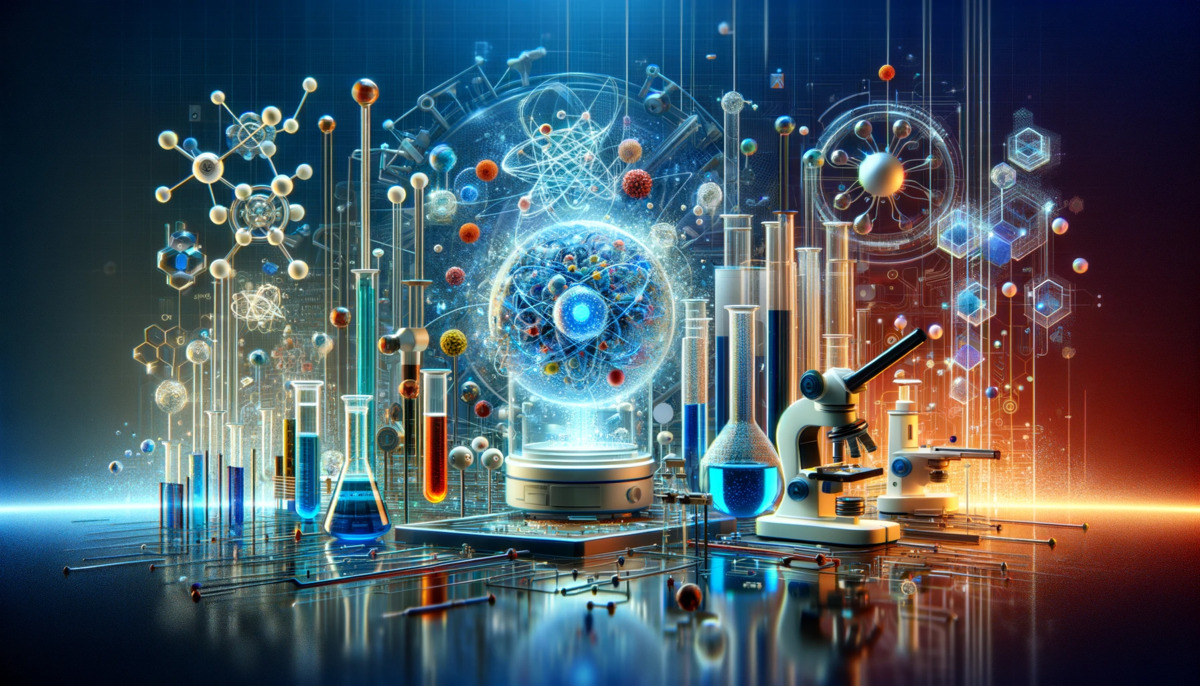
DeepMind's Breakthrough with 2.2 Million Newly Discovered Materials
DeepMind's AI has transformed material science by identifying 2.2 million potential materials, a breakthrough that shatters the limits of human research and paves new paths for technological developments.
Prien am Chiemsee - 2023-12-19
The discovery of new materials is a key area of material science and technology, having significant impacts on various industries, from energy production to electronics and aerospace. Artificial Intelligence (AI) has proven to be a valuable tool in accelerating and expanding this process. In particular, Google's AI division, DeepMind, with its development named GNoME (Graph Networks for Material Exploration), has made a significant contribution to the prediction and discovery of new materials. This article discusses the latest breakthroughs and developments published in the renowned scientific journal Nature.
Critical Analysis of Discoveries by Google DeepMind's AI
Methodology and Performance of Google DeepMind's AI
Google DeepMind has developed an AI capable of predicting the structure of over two million potential new crystalline materials. This represents a massive increase in performance, as the number of predicted materials is 45 times greater than the number of materials discovered or invented throughout the history of science. Of the newly designed materials, about 400,000 could be produced under laboratory conditions, highlighting their potential practical application.
The AI utilized data from the Materials Project, a database containing information on the properties of hundreds of thousands of known substances. The materials designed by DeepMind could enable revolutionary applications in areas such as batteries, computer chips, or solar cells. Among them are 52,000 compounds resembling graphene, a material used in quantum computers, and 528 potential lithium-ion conductors.
Potential Applications and Significance for Industry
The discovery of these new materials could significantly influence the development of modern technologies. In particular, the 528 identified lithium-ion conductors could lead to more efficient batteries, which is of great interest to the electric vehicle industry. Moreover, the graphene-like layered compounds could revolutionize the field of electronics through the development of superconductors.
The discovery of these new materials could significantly influence the development of modern technologies. In particular, the 528 identified lithium-ion conductors could lead to more efficient batteries, which is of great interest to the electric vehicle industry. Moreover, the graphene-like layered compounds could revolutionize the field of electronics through the development of superconductors.
Autonomous Laboratories and Their Influence
Another significant advancement is the introduction of autonomous laboratories, such as the A-Lab at Berkeley Lab, which combine robots and machine learning to accelerate the research process. These labs are capable of conducting a large number of experiments in a short time, which could lead to faster synthesis of new materials and revolutionize the way scientific research is conducted.
Challenges and Future Perspectives
Although the discoveries by Google DeepMind's AI are impressive, the challenge of quickly bringing new materials to market remains significant. There is hope to significantly shorten the current time span to market introduction, with the goal of reducing it to five years. This development could represent a paradigm shift in material research, where AI technologies play a central role.
Although the discoveries by Google DeepMind's AI are impressive, the challenge of quickly bringing new materials to market remains significant. There is hope to significantly shorten the current time span to market introduction, with the goal of reducing it to five years. This development could represent a paradigm shift in material research, where AI technologies play a central role.
Conclusion and Assessment
The progress made by Google DeepMind with its AI GNoME is undoubtedly remarkable. The ability to discover and predict such a large number of new material structures in such a short period demonstrates the immense potential of AI in material science. The combination of extensive databases, powerful AI algorithms, and the use of autonomous laboratories could significantly accelerate material development and discovery.
The impact of these developments on various industries could be profound. The ability to develop new materials for batteries, solar cells, and computer chips could contribute to solving some of the most pressing problems of our time, such as the energy transition and the development of sustainable technologies.
Nevertheless, challenges remain. The implementation of materials discovered in the lab into commercial products requires time and investment. It is also important to ensure the reliability and safety of these materials in practical use. Furthermore, the research community must continue to carefully examine the ethical and societal implications of these technologies.
In summary, the work of Google DeepMind represents a significant advance in material science and has the potential to greatly accelerate the development of new, innovative materials. It is an exciting time for material research, and the role of AI will undoubtedly continue to grow and push the boundaries of what is possible.
489
More articles

Unstructured.io
The Game-Changer for Hermine.ai in the Jungle of Unstructured DataImagine standing in front of a huge, colorful wall of unstructured data: PDFs stacking up like mountains, PowerPoint presentations flowing through your projects like a wild rive...
Read more
411

The Future of AI
Multimodality, Ethics, and the Evolution of GPT-4Artificial Intelligence (AI) has made enormous strides in recent years, and with the introduction of OpenAI's GPT-4 (Generative Pre-trained Transformer 4), we are at the dawn of...
Read more
369